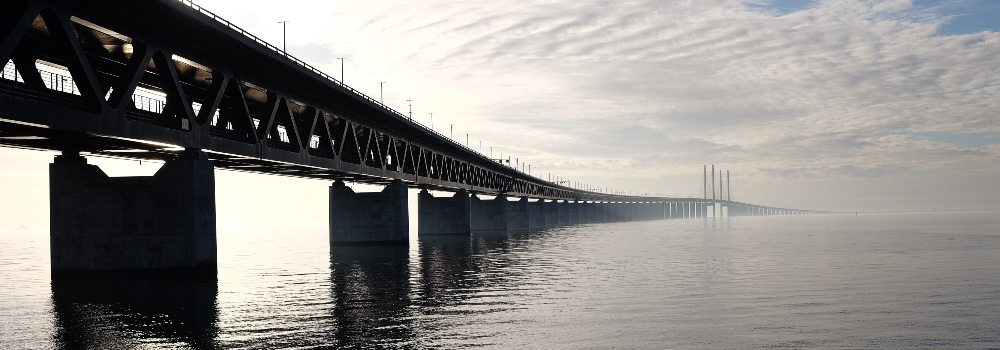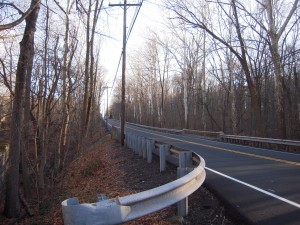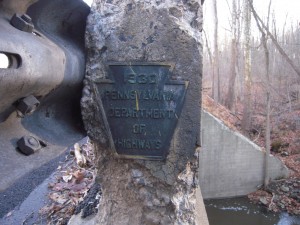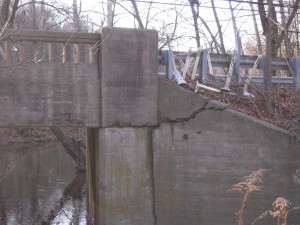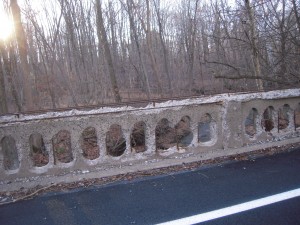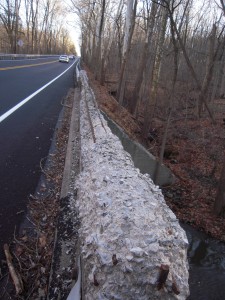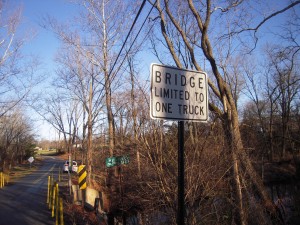The Issue
If you’ve been paying attention to transportation issues in the news recently, you’ve likely noticed that the issue of transportation funding has been ubiquitous. Infrastructure has become one of the top issues in state government with transportation funding making the “top five” list of issues state legislatures will be moving forward on during the 2015 session.
Who’s Footing the Bill
While everyone seems to agree on the need for increased transportation funding, Congress cannot seem to agree on a means of doing so. Traditionally, much of the cost to repair and replace highways and bridges comes from the federal government via the Highway Trust Fund. The Highway Trust Fund is financed by the federal gas tax, which is currently 18.4 cents per gallon on gasoline. The problem is that since the federal gas tax was set up as a set amount of cents per dollar rather than as a percentage of the price of gasoline, it has not kept up with inflation. As such, the current gas tax cannot maintain our transportation network, meaning that if nothing is done about this, the Highway Trust Fund will go broke by the spring of 2015.
In recent years, Congress has used “short-term patches” to address these issues, but Transportation Secretary Anthony Foxx is calling for Congress to pass a long-term transportation funding bill, asserting that we need a permanent solution rather than a temporary fix that just puts the issue on the back burner again. “Every part of the country has a different set of needs,” said Foxx, “but everywhere, the needs outdistance the amount of money that’s available to deal with it. This country’s better than that.”
A Closer Look
A recent segment on 60 Minutes explored the extent of deterioration of America’s neglected infrastructure. Roads and bridges are crumbling, airports are out of date, and the majority of our seaports are in danger of becoming obsolete. Nearly 70,000 bridges in America are considered to be structurally deficient, meaning they need to either be replaced or repaired in a dramatic way. One out of every nine bridges in a country whose infrastructure was once the best in the world are now in a state of disrepair.
Each day, tens of millions of Americans cross bridges that are structurally deficient. Pittsburgh, the city of bridges, is arguably facing the most serious infrastructure problem in the country. Metropolitan Pittsburgh is home to more than 4,000 bridges, twenty percent of which are structurally deficient and most of which have exceeded their 50-year design plans. Let’s take, for example, the Liberty Bridge. Built in 1928, this bridge was designed to last for 50 years at a time when cars, trucks and traffic were much lighter. Now, 86 years later, it continues to be one of the most essential and most used bridges for travel in Pittsburgh. Another Pittsburgh bridge actually has a structure built underneath of it to catch debris so that it does not fall on traffic passing underneath the bridge.
Philadelphia is not much better off. In Philadelphia, 9 million people per day travel over 900 bridges in Philadelphia that are classified as structurally deficient. One of the nation’s most important highways, I-95, has a 22-mile stretch through the city of Philadelphia. Along that 22-mile section there are 15 structurally deficient bridges. Fixing them would be a $7 billion undertaking.
Below are pictures of some of our local bridges in the suburban Philadelphia area. Notice the level of deterioration. Some are cracked, some are crumbling, some are too narrow, and some have designs that are not adequate for their current uses. The ways in which bridges around the country are structurally deficient are numerous and the attempts at fixing them are few.
These structurally deficient bridges are tragedies waiting to happen; but it is not just bridges that are failing. According to the American Society of Civil Engineers, almost one third of major roads in America are also in poor condition and in need of major repair. A shortage of airport runways and gates, coupled with outmoded air traffic control systems has led to U.S. air travel being the most congested in the world. Our eastern seaports are not dredged deep enough for modern cargo ships.
The American Society of Civil Engineers’ 2013 Report Card on America’s Infrastructure rewarded the U.S. a grade of ‘D+’ overall. As I’m sure you remember from school, a D+ is not failing, but it also was not a grade you were happy to show your parents. ASCE estimates that by 2020, $3.6 trillion will need to be invested in America’s infrastructure.
The Solution
This neglect is not a result of a lack of knowledge, but rather a lack of funding and priority. Public spending on infrastructure has not been this low since 1947. There is simply not enough money to keep up with the maintenance, and there is still no consensus in Washington about where to get the money to solve this problem. Not only is there no consensus, until recently there was also no significant political support or urgency for solutions to solve this problem.
The issue was finally brought into the national spotlight when President Obama addressed the infrastructure issue after returning from a trip to China. At the Business Roundtable on Wednesday, December 3rd, President Obama said that in comparison to China, the state of the U.S.’s infrastructure is “embarrassing” and that we are “falling behind” other countries. He cited investment in infrastructure as one of his economic priorities for the remainder of his presidency. The following day, Cathy McMorris Rodgers, chairwoman of the House Republican Conference, said that passing a long-term transportation funding bill is going to be a priority for GOP leaders in the next Congress, adding that a foundational outline for this “long-overdue” bill has already been put together between the House and the Senate.
As for how to fund these infrastructure investments, some have proposed raising the gas tax, which has not been increased since 1993. Others have suggested increasing tolls. Whatever the solution, it needs to come soon.
As questions abound about how to make sure we are maximizing our limited dollars when it comes to maintaining and modernizing our roads and bridges, Maine Congressman Mike Michaud has urged President Obama to do this by incorporating LCCA (life cycle cost analysis). This would mean incentivizing the use of LCCA by “rewarding states and other grantees that pursue cost effective projects with extended lifespans.” Michaud asserts that although thinking long-term about operations and maintenance expenses may be more costly upfront, future costs would be minimized.
Some states, such as Missouri and Pennsylvania, have turned to an alternative option called public-private partnerships, often referred to as PPP or P3. Under this type of contract agreement, private investors assume the responsibility for financing and building a bridge or highway, and as a result, they are granted the right to collect tolls for a specified period of time, often in the decades.
What do you think the best solution to this problem is? Share your thoughts in the comments section below!


